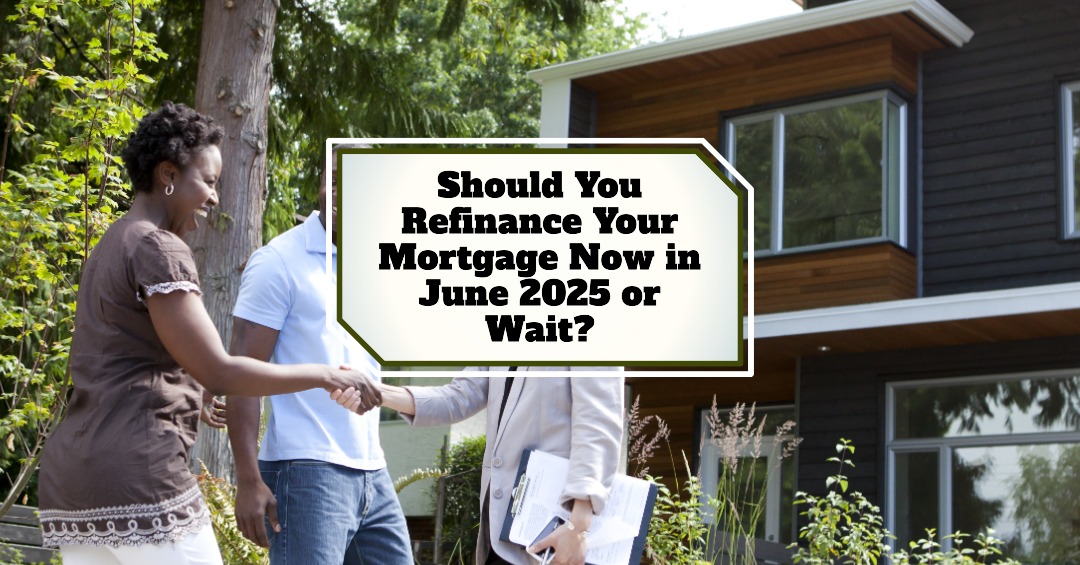Refinancing a mortgage can be a powerful financial move—allowing you to secure lower payments, shorten your loan term, tap equity, or switch mortgage types. But with refinancing costs, market shifts, and changing home valuations, 2025 presents both opportunity and complexity for borrowers. This article explores why, when, and how to refinance effectively in 2025—and highlights nine smart strategies for different homeowner goals.
Refinancing turns beneficial when current rates are meaningfully lower than your original rate—typically by at least 0.5–1% Even a 0.5% drop can offset closing costs in a few years, while a 1% drop often results in significant monthly savings
Switching from a 30‑year to a 15‑year mortgage can shave hundreds of thousands in interest over the life of the loan—even if monthly payments remain similar .
If your home equity has grown, a cash‑out refinance lets you borrow against that equity to fund renovations, pay off debt, or invest—often at lower interest rates than credit cards or personal loans
For homeowners on adjustable-rate mortgages (ARMs), refinancing to a fixed-rate mortgage locks in consistent payments and removes the unpredictability of rising rates
If your equity has reached 20%, a cash‑in refinance—paying down principal—can remove private mortgage insurance (PMI) and reduce monthly payments
As of early July 2025, the average 30‑year mortgage rate was 6.67%, down slightly from earlier months Analysts expect rates to hover between 6–7% through 2025 , making refinancing viable especially when securing a 1% rate reduction
The breakeven point is the time needed to recoup refinancing costs via monthly savings. If refinancing costs are 3% of your loan, a small rate drop may take 3–5 years to pay off If you’re selling soon, refinancing may not make financial sense .
You can often refinance at any time; some lenders require no waiting period, while others enforce a six-month rule Remember, refinancing resets the loan term clock.
Lenders typically require a credit score of at least 660 for conventional refinancing, and often 680+ for best rates Low scores may mean higher interest rates—or delay eligibility until improved.
Typical guidelines are 20% equity for rate-and-term or cash-out refis and 5–10% equity for standard ones
Avoid opening new credit lines or large purchases prior to closing—lenders may reevaluate your debt-to-income ratio .
Most refinances require a home appraisal. Some streamline options (like FHA/VA) may waive this under certain conditions
Get quotes from at least three to five lenders including direct, brokerage, and credit unions to compare rates and fees .

Swap your mortgage for a lower rate and/or shorter term. Ideal when rates drop by at least 0.5–1% .
Borrow more than what you owe and pocket the difference. Great for consolidating debt or funding home improvements—but interest rates and loan size increase
Deposit extra cash at closing to lower your mortgage balance. Helps remove PMI or improve loan-to-value ratio for better rates
Available for FHA, VA, and USDA borrowers with minimal documentation and no appraisal. Simple and quick—but limited cash-out (~$500) and closed to homeowners with loans newer than six months
Lenders roll fees into your mortgage or increase rates in exchange for zero upfront costs—handy if you’re tight on cash, but may cost more over time .
Convert risky adjustable-rate mortgages to fixed for stability. Or, if rates are low and you’re staying short-term, switch to an ARM for lower payments .
Combine first and second mortgages or HELOCs into a single loan. It simplifies payments and could reduce interest, but total debt increases .
Borrow against equity in rental properties. Ideal for expanding portfolios but comes with stricter terms and higher rates
A lender agrees to refinance based on current lower home value, reducing principal below existing mortgage. Helps underwater homeowners avoid foreclosure—rare but helpful
Refinancing costs typically range 3–6% of loan amount, including appraisal, title, underwriting, and origination fees
Using an amortization schedule or refinance calculator, calculate the break-even point:
- E.g., $300,000 mortgage, refinancing saves $200 monthly → 5% closing cost = $15,000 → 75 months (~6+ years) to recoup
- If you’re selling in 3 years, that may not be worth it.
- Monitor Rate Drops: Depending on your loan, you may be able to do another refinance in the future—e.g., FHA/VA streamlines
- Debt Recycling: Some use cash-out funds for investment—but beware of risks if home values dip
- Watch Home Values: Falling home values can result in require PMI or impede future refinancing options .
- The 30-year fixed rate recently touched 6.67%, down from 6.95% a year ago
- Rates are projected to end the year in the 6–7% range—so refinancing remains possible but not dramatic savings territory
- Home sales remain low, yet mortgage applications rose 2.7% last week—possibly signaling borrower appetite for refinancing
Consult a financial mixer:
| Situation | Recommended Refi Strategy |
|---|---|
| Rate ≥1% lower? | Rate‑and‑Term or No-Cost |
| Accumulated equity ≥ 20%? | Cash-In to drop PMI |
| Need funds? | Cash-Out or Consolidation |
| Govt. loan? | Streamline |
| Rate type unstable? | Convert ARM to Fixed |
| Selling soon? | Skip refi |
Refinancing in 2025 can reduce monthly costs, pay off your mortgage sooner, leverage equity, or stabilize payments—but only if you time it right, pick the correct strategy, and properly weigh costs against long-term benefits. Rates now are moderate, and refinancing may help especially when:
- You can lower your rate by ≥1%
- You can break even before selling or refinancing again
- You’ve built strong credit and equity
- You choose a strategy that aligns with your goals (shorter payoff, no-fee structure, cash needs)
Take your time: gather multiple quotes, consult tools and apps, and run the numbers. With clarity and preparation, your refinance can be a transformational step toward financial efficiency and peace of mind.

